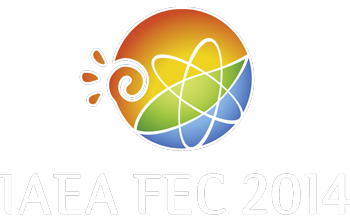Speaker
Dr
Arkady Serikov
(Karlsruhe Institute of Technology (KIT))
Description
The radiation shielding performance of two diagnostic port plugs of ITER, Equatorial and Upper Port Plugs (EPP and UPP) has been evaluated resulting in several proposals for shielding design improvements. These improvements were based on the comprehensive optimization of the shielding variants obtained with parametric analyses of the geometry and material composition of the port structures. The crucial parameter for the optimization was the value of Shut-Down Dose Rate (SDDR) in the EPP and UPP interspaces inside the ITER bioshield. The SDDR was minimized following the ALARA (As Low as Reasonably Achievable) principle taking into account the feasibility to implement the shielding options with the actual hardware in the vicinity of EPP and UPP. The port plugs are large structures which play the dual and opposite roles of providing access for the diagnostic systems while being vacuum-tight and ensuring that the vacuum vessel ports are adequately “plugged” to prevent the leakage of neutron and gamma radiation. The shielding performance of the plugs should be effective not only against the 14 MeV neutron irradiation from the D-T plasma and secondary gammas produced by neutron interaction with the structures during the ITER operation, but also against the decay gamma radiation emitted from the radioactive materials of ITER during its cooling time. For that reason, SDDR calculations were performed using the state-of-the-art methodology to provide reliable estimates of SDDR inside the port interspaces where personnel access is assumed after a cooling time of ~12 days with the target value of 100 microSv/h following the ALARA approach. The neutronic results presented in this paper can be useful for the development of a common approach for the shielding arrangement of ITER ports. These results can impact the design of the general-purpose port because the radiation environment at the ports is mostly related to the gap interfaces between the ports and components of ITER, such as blanket, manifolds, and vacuum vessel. Design solutions for an improved shielding have been elaborated taking into account the effect of radiation “cross-talks” between the ports, and introducing several types of gap labyrinths which can reduce the radiation streaming. Such design options have been proposed for implementation and their feasibility was checked at the level of port integration.
| Country or International Organisation | Germany |
|---|---|
| Paper Number | FNS/P4-27 |
Author
Dr
Arkady Serikov
(Karlsruhe Institute of Technology (KIT))
Co-authors
Dr
Alejandro Suarez
(ITER Organization)
Dr
Bruno Levesy
(ITER Organization)
Dr
Charles Spencer Pitcher
(ITER Organization)
Dr
Luciano Bertalot
(ITER Organization)
Dr
Sunil Pak
(ITER Organization)
Dr
Ulrich Fischer
(Karlsruhe Institute of Technology)
Dr
Victor S. Udintsev
(ITER Organization)

